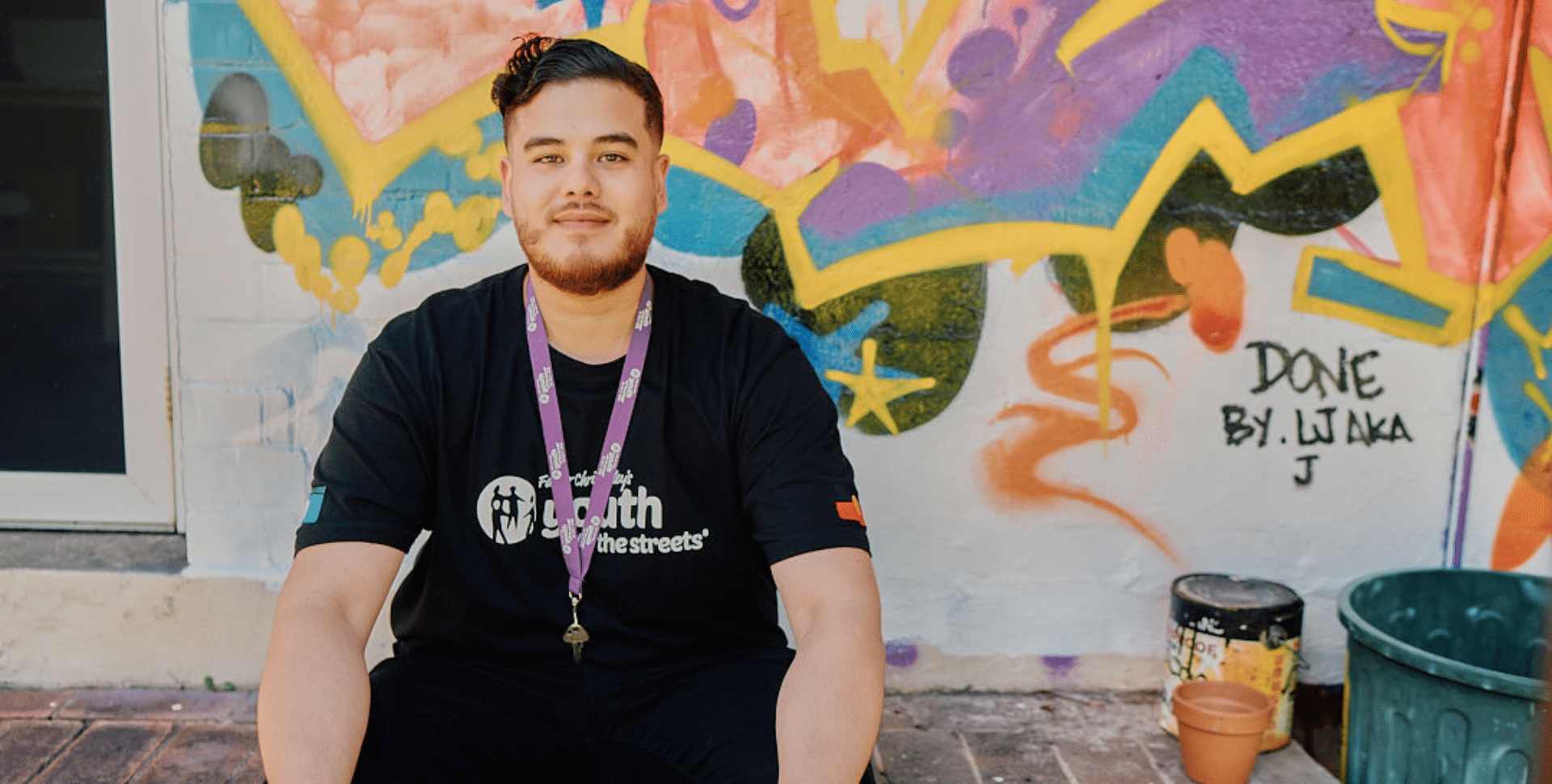For many young people, violence at home feels normal until one day it becomes a crisis, and they have no choice but to flee for their own safety – often taking very few belongings with them.
“Many people think homelessness is that you just don’t have a home,” says Youth Off The Streets’ Omar Bensaidi, Taking Action Creating Change Together (TACCT) Project Lead.
“Many children and young people have a home, but home is unsafe for them.”
Their reality becomes extremely transient and unstable.
“Trying to figure out where they’re staying for the night or how they’re going to afford food is stressful and anxiety-inducing – further compounding their trauma,” he explains.
“That could mean leaving home to crash at a friend’s house, on a couch or sleeping rough on a park bench, on transportation, or staying in a crisis refuge.”
Historically, the child protection system and domestic and family violence (DFV) sector agencies have treated DFV as a problem between adults.
“More often, it focuses on the violence experienced by women, which is necessary, but children and young people are usually an afterthought,” Omar says.
“We must recognise that children and young people are DFV victim-survivors, and their experience should not be secondary to the adult’s experience.”
Many children and young people have been left unsupported in trying to address the significant impacts of DFV on many areas of their lives.
“Children and young people should be able to receive the support needed to address their experiences of domestic and family violence without ending up in crisis accommodation or experiencing other forms of homelessness,” Omar says.
Navigating the system alone is highly challenging for young victim-survivors fleeing domestic and family violence with little money and support.
“There’s barely an existing service built to address children and young people fleeing violent circumstances at home.”
“And their chances of finding a private place to rent are next to zero because they have no rental history or references, may not be able to afford it or even have identification.
“Young people must make do with what they have, which usually means they end up bouncing between crisis accommodation,” says Omar.
Around 90% of young people accessing Youth Off The Streets’ Inner West Youth Homelessness Service (IWYHS) are DFV victim-survivors.
There has been a significant service gap for young Australians aged 12–24 who have experienced DFV.
Youth workers must be equipped to support these young people, especially considering the scale of the problem in Australia.
Youth Off The Streets’ upcoming training program, Taking Action Creating Change Together (TACCT), will give the youth homelessness sector the tools to support children and young people with lived experience of DFV.
“We’re currently developing the course workshops and content,” Omar says. “We aim to begin delivering it across the sector from mid-2024.
“We can shift the focus and place the young person’s experience at the centre of our work. We can develop better approaches and support interventions to help young people in those circumstances.”
TACCT aims to open more doors and conversations across the sector to discuss innovative ways to support children and young people experiencing DFV.
“We’ll work with and empower the youth sector workforce to educate and improve their capacities to better support children and young people who have experienced DFV,” Omar explains.
Currently, there is no standalone national strategy to address youth homelessness. Omar believes that if there’s no plan to address the issue, then the issue doesn’t exist for many people in the public.
“In my opinion, this discrepancy goes back to my original point about the fact that children and young people aren’t treated as victim–survivors.
“Once the issue is on the agenda and the national strategy is being developed, funding can be directed towards services to deliver the necessary support.”

